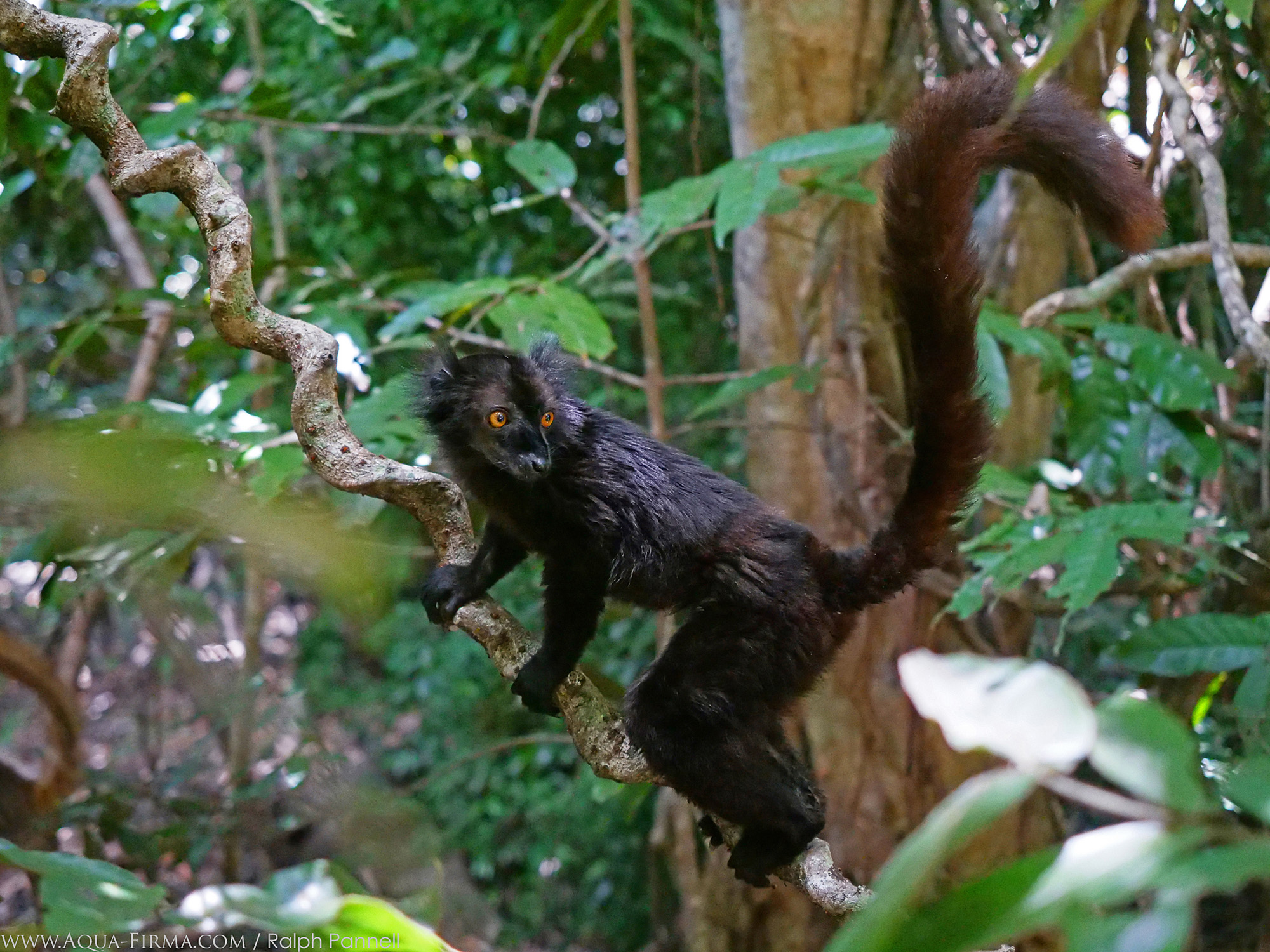Whale Shark Research – Islands, Marine Life & Lemurs
Madagascar
£2,290
with Aqua-Firma Photographer Ralph Pannell
& Madagascar's leading Whale Shark Researcher Stella Diamant
Your first sight of a Black Lemur might confuse you, because the females are not black at all, but a lovely light to chestnut brown colour, with wild tufts of hair around the ears. The males share these ear tufts, but are completely black. This is one of Nature's clearest examples of what is known as sexual dimorphism; or in plain English, a difference between genders. More specifically associated with colour, this is known as sexual dichromatism.
There are two species of Black Lemur: the Black Lemur (Eulemur macaco) and the Blue-eyed Black Lemur (Eulemur flavifrons). They are part of the 12 species True Lemur family, denoted by the Latin name Eulemur. The two species of black lemur are very similar in size, biology and behaviour. The bodies of an adult are usually 40 - 55 cm, with a fluffy tail extending their overall length to between 90 - 110cm. E. macaco black lemurs have piercing orange eyes, or dark brown. The eyes of the Blue-eyed Black Lemurs have, as their name suggests, blue eyes, which are truly piercing.

Black Lemurs form mixed gender groups of up to 30 individuals, comprising slightly more females than males. Females give birth to a single offspring between September and November, which is just before the rainy season. Flowers are abundant at this time, with fruit emerging with the rains.
Black lemurs feed largely on fruit, pollen and nectar; but also sometimes eat invertebrates and fungus. They only digest the flesh of fruit they eat, so seeds within the fruit pass straight through their digestive system. As these seeds pop out the other end, black lemurs disperse them with a handy supply of organic fertilizer. Around 50 species of plant benefit from this form of dispersal. Black lemurs also help forest plants by pollinating flowers as they feed on nectar.
Disturbed forest can often provide flowering and fruiting species, so black lemurs can tolerate areas impacted by humans. They may also raid crop areas - an adaptability that has been critical for their survival.
The Black lemur, E. macaco, is the most numerous lemur on the northern islands of Nosy Be, Nosy Sakatia, Nosy Tanikely and Nosy Komba. This local abundance disguises the fact that the E. Macaco species is Endangered, with just a few surviving in the tropical dry forests of far north west of mainland Madagascar, where deforestation has been significant.
The Blue-eyed Black Lemur (also known as Sclater's lemur) is Critically Endangered - one of the 25 most endangered primates in the world, with less than 1,000 left in the wild. They survive in ever decreasing and highly disturbed forest in Northwestern Madagascar. Until 2007, none of their natural habitat was protected. That year, the Sahamalaza National Park was inaugurated, within which the Anabohazo forest covers 65% of the known surviving population*.
Black lemurs are a joy to watch; active in the mornings and early evening, leaping between trees; but generally stationary during the hotter hours of the day, making habituated groups easy to observe and photograph. Our Whale Shark Research - Islands, Marine Life & Lemurs trip each October usually provides excellent black lemur viewing in the Lokobe National Park, watching newborn babies cling to their mothers' fur. We often hear them too, running across the roofs of our accommodation for this trip - nestled at the edge of a Sacred Forest. No one is permitted to enter this forest, so the lemurs can live here completely undisturbed.
References: